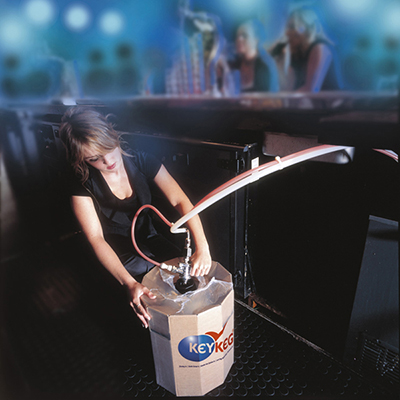Test: KeyKeg vs. steel kegs
Munich University of Technology has tested the one-way KeyKeg and compared it to steel kegs. Both types of kegs were tested under very demanding conditions during two extreme tests. The university tested both the taste of the beer and CO2 loss. The KeyKeg proved to be performing as good as steel kegs.
Both types of kegs were filled with ‘Helles’ and Weissbier’ in mid-December 2007 and kept at a constant high temperature of 28 degrees Celsius. ‘Weissbier’ is known for its higher amount of CO2 and therefore higher pressures. Each beer stored in the two types of kegs was tested by TU Munich after four months. For these tests, the “Weissbier” and “Helles” beers brewed by Weihenstephan Bayrische Staatsbrauerei were used. The Weihenstephan brewery is a well-known name in the beer market. Despite the constant high temperature of 28 degrees Celsius and correspondingly high pressures, both the KeyKegs and the steel kegs were found to be 100% physically intact and fully functional after four months.
After four months, TU Munich carried out tests of CO2 loss, of a possible contamination with micro-organisms, and taste. Fifteen people participated in the tasting tests. During the tests, no significant difference in taste between the beer dispensed of both types of kegs could be detected. The university did not detect any contamination with micro-organisms.
TU Munich also tested CO2 loss. The findings also demonstrated that the KeyKeg performed as well as the steel kegs. Therefore these test results prove that there is no difference in performance between KeyKegs and steel kegs when it comes to taste and CO2 loss. Two months after his four-month extreme test, Weihenstephan plans to perform the last and definite test.
Transport test
In another test, TU Munich simulated a harbour environment where KeyKegs were stored in a container under extreme weather conditions. For eight hours per day, the KeyKegs were exposed to a temperature of 45 degrees Celsius and, after that, for 16 hours per day to a temperature of 28 degrees Celsius for up to three weeks. Again, the tasting test showed that, after this extreme test, there were no differences in taste between beer from steel kegs and from KeyKegs. In addition, the test showed no increase in O2, and the difference in CO2 loss between steel kegs and KeyKegs was so small that TU Munich advised that this difference was negligible.
KeyKeg
The KeyKeg, a revolutionary one-way keg, was launched in November 2006. The KeyKeg turns out to be a long-desired solution for beer breweries and wine producers. The KeyKeg consortium received more than 60 requests for tests and many of the producers are running field tests now. In the meantime, the first orders have been placed and the first KeyKeg line started production in November 2007 in Schwerin, Germany. In order to be able to fulfil the requests and to produce as close to their clients as possible, the KeyKeg consortium is planning to set up another three production lines at different locations.
For further information and/or the complete research reports, please contact:
Robbert-Jan Knoppers, , Johannes Tippmann, .
Source
BRAUWELT International 2008


